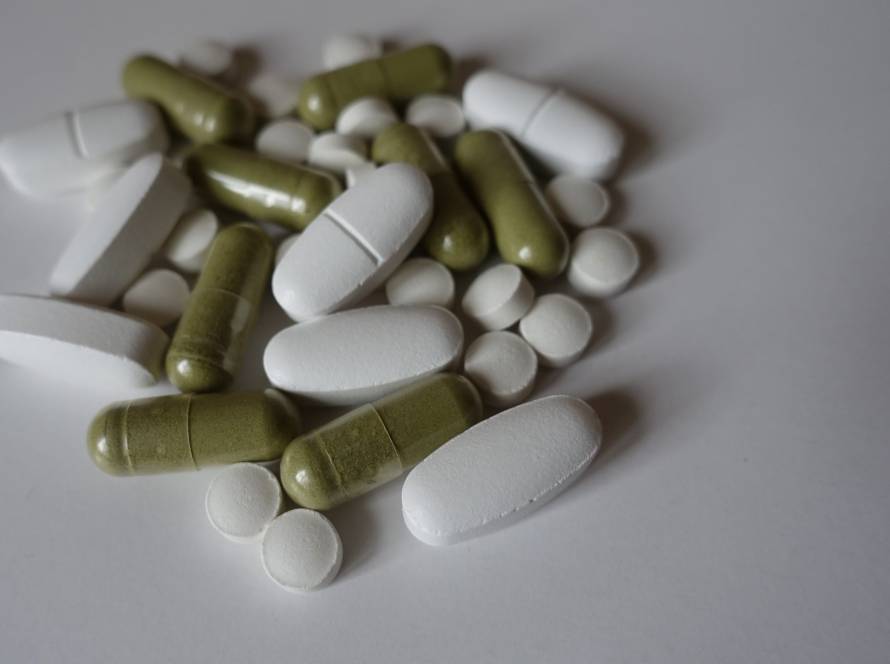Our body contains this natural compound found in foods like whole grains, mushrooms and aged cheese. Spermidine plays a vital role in keeping our cells healthy and extending their lifespan. Our bodys spermidine levels naturally decrease with age, which can affect cell repair and overall health.
This detailed guide will show proven ways how to increase spermidine levels through diet, supplements and lifestyle changes.
What is spermidine and why it matters for longevity
Spermidine belongs to a class of compounds called polyamines, which are molecules that exist naturally in every living cell.
The science behind polyamines in cellular health
Polyamines like spermidine play fundamental roles in many biological processes that cells need to function. They help stabilize DNA, transcribe RNA, synthesize proteins and modify proteins after translation. These mechanisms work together to control how cells grow, differentiate and die in a programmed way.
Spermidine stands out among polyamines because of its remarkable effects on cell health. Research shows this compound protects cells and genes from oxidative damage, regulates DNA methylation and supports overall cell development.
It also works like antioxidant and anti-inflammatory substances. These diverse functions explain why scientists increasingly focus on spermidine as a potential longevity compound. Studies in yeast, worms, flies and mice have showed that spermidine supplementation extends lifespan and slows down age related decline
How spermidine levels change with age
The relationship between spermidine and aging reveals some of the most compelling research findings. Studies show that polyamine concentrations, including spermidine, drop as we get older. This reduction becomes most noticeable during the transition from middle to older age.
Research has uncovered complex patterns in this age related decline. Scientists found that people aged 31-56 years and those over 90 had lower total polyamine concentrations than people aged 60-80 years. People over 90 managed to keep the highest relative proportion of spermine (another polyamine related to spermidine). This suggests possible adaptations in polyamine metabolism with extreme longevity.
This age related decrease in spermidine levels happens alongside reduced efficiency of many cellular processes, especially autophagy.
The connection between spermidine and autophagy
Spermidine’s most important longevity effect comes from its ability to trigger autophagy, the cellular “cleaning” process that removes damaged components and recycles them. This self renewal mechanism helps maintain cellular health and function.
Spermidine activates autophagy through several pathways:
- It inhibits acetyltransferases (particularly EP300), which leads to hypoacetylation of histones and activates autophagy-related genes;
- It adjusts expression levels of autophagy related genes (Atg);
- It regulates translation factor eIF5A to boost synthesis of transcription factor TFEB, a master regulator of autophagy.
Scientists cannot overstate the importance of this connection. They found that blocking autophagy in yeast, flies and worms completely eliminated spermidines lifespan extending effects. This provides srong evidence that autophagy drives spermidine’s promotion of longevity.
Studies also show that spermidine induced autophagy improves how mitochondria work, reduces inflammation and strengthens overall cellular resilience, all factors that contribute to healthy aging.
Top food sources of spermidine for daily consumption
Europeans consume about 10 to 15 mg daily of dietary spermidine. We can boost our spermidine levels naturally by focusing on specific food categories without supplements.
Plant based spermidine powerhouses
Plant derived foods pack higher levels of spermidine than animal products. Wheat germ leads the pack as the champion source with 243-350 mg/kg of spermidine.
Soybeans come in second with levels between 72-242 mg/kg. Here are other excellent plant based sources:
- Mushrooms;
- Green peas;
- Broccoli and cruciferous vegetables;
- Green peppers.
Cereals, legumes and soy derivatives stand out as food categories richest in spermidine. Hazelnuts, pistachios, spinach and cauliflower also add substantial amounts to our diet.
Animal derived spermidine sources
Animal products usually have lower spermidine levels than plant foods but provide more spermine, another beneficial polyamine. Aged cheese tops the list of animal sources.
Additional animal sources include:
- Liver: bulls and cows offer the best sources;
- Meat products: lower in spermidine but richer in spermine;
- Fish: contains more than milk and eggs but less than meat products.
Fermented foods with high spermidine content
Fermentation boosts polyamine content, making fermented foods excellent spermidine sources. Rich options include:
- Natto;
- Tempeh;
- Fermented sauerkraut;
- Miso.
Cheeses fermentation process increases its spermidine content, especially in blue cheese and brie. Some fermented soybean products like sufu might have undetectable spermidine levels.
Understanding spermidine supplements and their efficacy
If we have trouble maintaining optimal spermidine levels through diet alone, supplements can be a good alternative. The supplement market has grown substantially over the last several years as research continues to show spermidine’s benefits for longevity.
Types of spermidine supplements available
Spermidine supplements come in two main categories:
- Natural extracts: using wheat germ extract that contains about 0.9-1.2mg spermidine per serving along with other natural polyamines (spermine and putrescine). These extracts have a lower concentration (under 5%) of spermidine but include beneficial co-factors that work with the Polyamine Salvage Pathway;
- Synthetic spermidine: we’ll find this listed as “Spermidine Trihydrochloride” on ingredient labels. This lab created form provides higher concentrations and purity levels.
Food derived spermidine works better because of its natural makeup and how well the body absorbs it. Synthetic versions might have higher doses but lack the supporting co-factors that help with absorption and effectiveness.
Potential side effects and precautions
Spermidine has proven very safe in both animal and human studies. A safety study with 30 participants showed that taking spermidine-rich wheat germ extract for three months didn’t affect their weight, electrolytes, blood markers, blood pressure or other vital signs.
Research consistently shows that spermidine supplements from plant extracts are safe and well tolerated by mice and older adults. More than 85% of participants stick with the treatment. People rarely experience side effects at recommended doses.
Despite this good safety record, some groups should be careful:
- Pregnant or breastfeeding women (not enough research exists);
- People with bleeding disorders or those taking blood thinners;
- Those with liver or kidney conditions;
- People who have immune system disorders.
Spermidine supplements ended up being a safe choice for most healthy people who want to add to their dietary intake, especially since natural levels drop as we age.
Lifestyle factors that enhance natural spermidine production
Lifestyle factors are vital for maintaining and boosting our bodys natural spermidine production. Scientists have discovered several ways we can naturally increase spermidine levels and get the most out of its benefits for cellular health.
The effect of fasting and caloric restriction
Fasting works well to increase spermidine levels. A breakthrough study showed that different fasting methods raised spermidine concentrations in yeast, flies, mice and humans. The results were impressive when people followed intermittent fasting with 12-hour eating windows and 36-hour fasting periods.
Long term caloric restriction works too. Male mice eating 30% less than normal showed higher spermidine levels by 17 months. People who tried therapeutic fasting for 7-13 days saw their serum spermidine levels rise, whatever their age or starting BMI.
Exercise and physical activity effects
Exercise gets autophagy going and changes how polyamines work in our body. Studies show that autophagy kicks in after 60 minutes of moderate to intense aerobic exercise. A quick 20-minute workout doesn’t have the same effect.
Experts suggest these tips for better spermidine metabolism:
- Mix cardio with strength training;
- Work out regularly;
- Keep intensity at moderate levels.
Exercise turns on AMPK (AMP-activated protein kinase), which then promotes autophagy through FOXO phosphorylation and ULK1 increase. Taking spermidine supplements works even better with exercise because it boosts AMPK-triggered autophagy.
Sleep quality and spermidine synthesis
Half of all older adults struggle with sleep problems and this affects their quality of life. Bad sleep disrupts autophagy and metabolism, which can lower spermidine production.
Research shows spermidine helps maintain our body clock as we get older. It triggers autophagy that keeps circadian clocks and sleep controlling neurons healthy, leading to better and more refreshing sleep.
Stress management for optimal polyamine metabolism
Chronic stress hurts many metabolic processes, including how polyamines work. Our body makes more polyamines when stressed as part of its “polyamine-stress-response”. Long term stress might cause unhealthy buildup of polyamines in the brain.
Meditation, deep breathing and yoga can help keep healthy spermidine levels. Spermidine itself helps reduce stress related inflammation, creating a healthy cycle for our cells.
We can boost our spermidine levels naturally through several ways. Natural food sources like wheat germ, aged cheese and mushrooms pack substantial amounts of spermidine. Our body also makes more spermidine when we practice intermittent fasting and exercise regularly.
Supplements can be convenient, but natural foods give the best results because they contain additional nutrients and co-factors. Results differ from person to person, but steady use of these approaches can help extend both lifespan and healthspan effectively.


